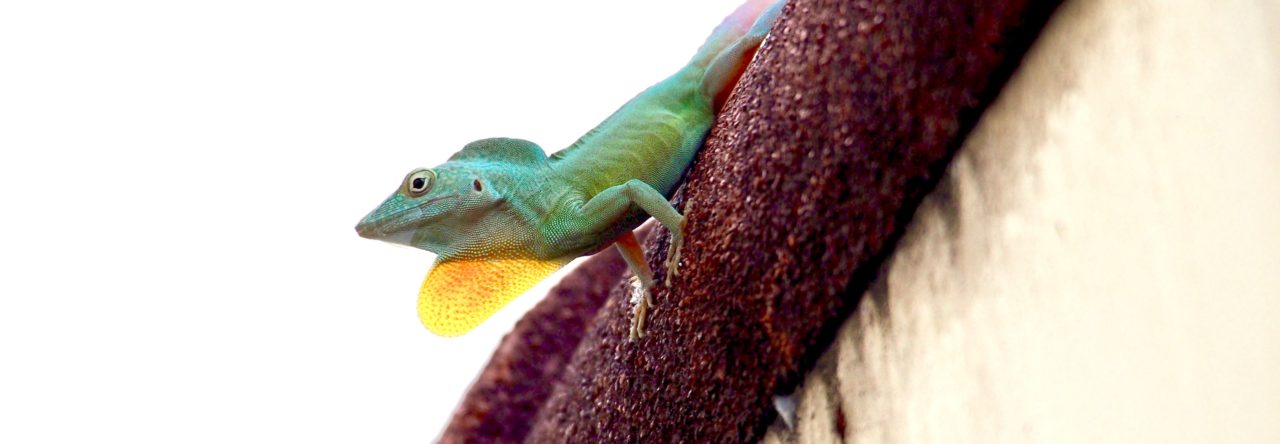
Early specimens and scientific drawings of Anolis proboscis
 At the Evolution 2012 meeting, after a scheduling snafu delayed his talk fifteen minutes and prompted panic from an anticipatory audience, Jonathan Losos mused about the natural history and ecology of the Ecuadorian Horned Anole, Anolis proboscis. In case you missed his talk, read all about the rediscovery of A. proboscis.
At the Evolution 2012 meeting, after a scheduling snafu delayed his talk fifteen minutes and prompted panic from an anticipatory audience, Jonathan Losos mused about the natural history and ecology of the Ecuadorian Horned Anole, Anolis proboscis. In case you missed his talk, read all about the rediscovery of A. proboscis.
Following the talk, an audience member reported seeing a horned anole during fieldwork in the Guiana Shield. She attempted to catch it, but it eluded her. From her description, it sounded like A. phyllorhinus, but A. phyllorhinus has only been reported in the Brazilian Amazon. A. proboscis is Ecuadorian and the third known proboscid anole, A. laevis, is from the Peruvian Amazon.
At the very least, this suggests a range extension for A. phyllorhinus. Or, there could be a new species of proboscid anole waiting to be described in the Guiana Shield! Has anyone else seen this anole?
MIGUEL TREFAUT RODRIGUES, VINICIUS XAVIER, GABRIEL SKUK, AND DANTE PAVAN. (2002) NEW SPECIMENS OF ANOLIS PHYLLORHINUS (SQUAMATA, POLYCHROTIDAE): THE FIRST FEMALE OF THE SPECIES AND OF PROBOSCID ANOLES. PAPEIS AVULSOS DE ZOOLOGICA, S. PAULO: 42, 363-380.
JONATHAN B. LOSOS, MELISSA L. WOOLLEY, D. LUKE MAHLER, OMAR TORRES-CARVAJAL, KRISTEN E. CRANDELL, ERIC W. SCHAAD, ANDREA E. NARVAÉZ, & , FERNANDO AYALA-VARELA, AND ANTHONY HERREL (2012). NOTES ON THE NATURAL HISTORY OF THE LITTLE-KNOWN ECUADORIAN HORNED ANOLE, ANOLIS PROBOSCIS Breviora, 531 DOI: 10.3099/531.1
 ographical Jeopardy.
ographical Jeopardy.








